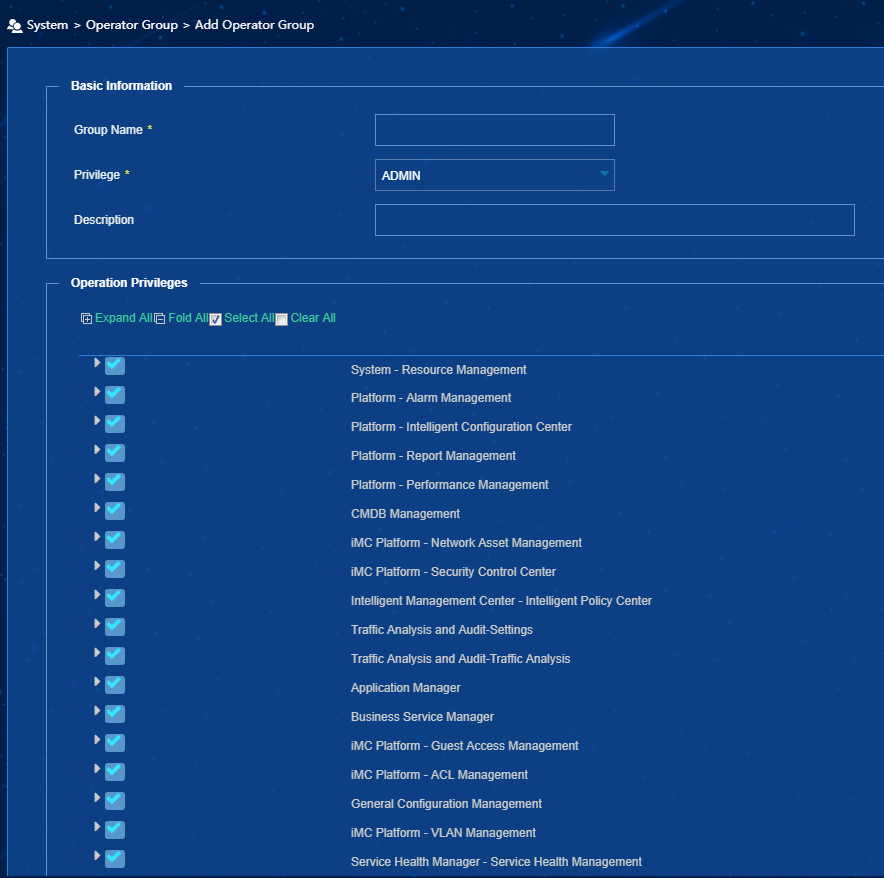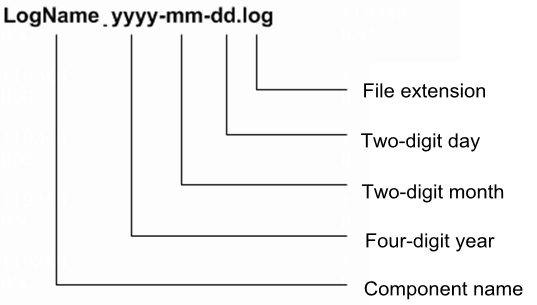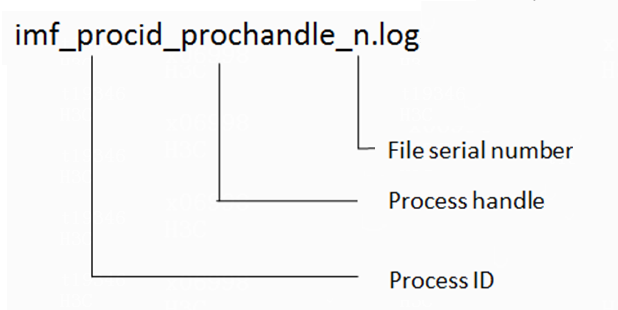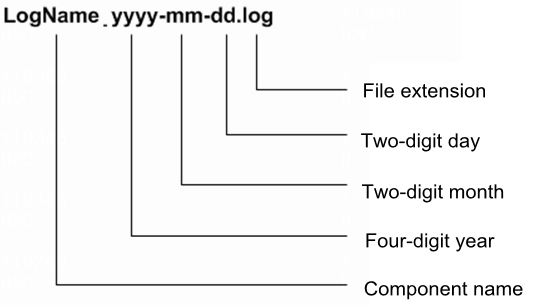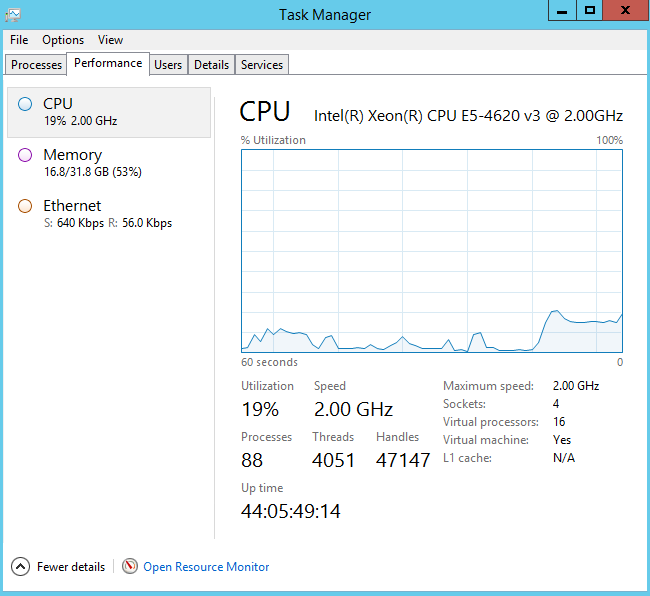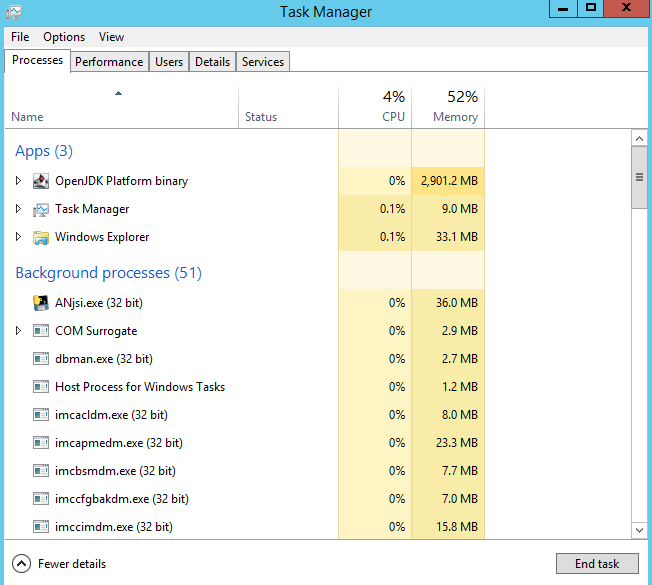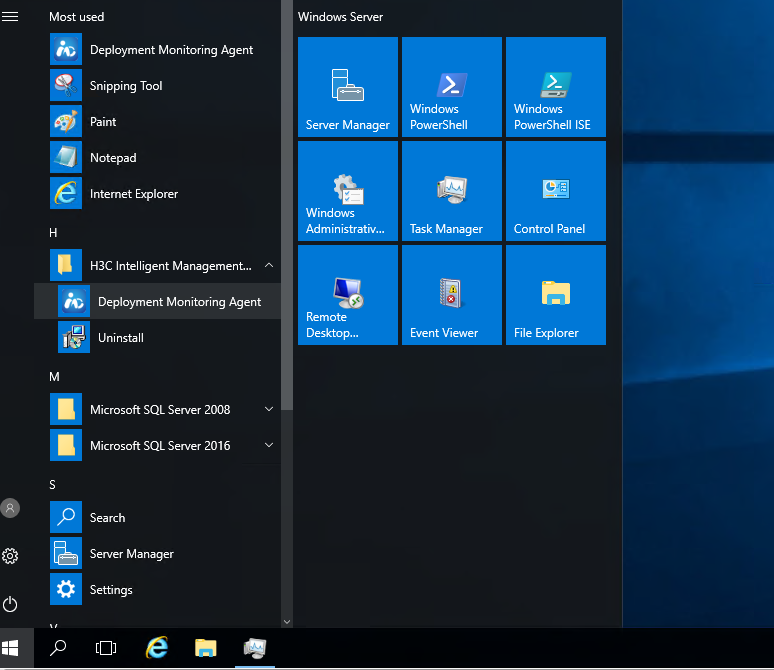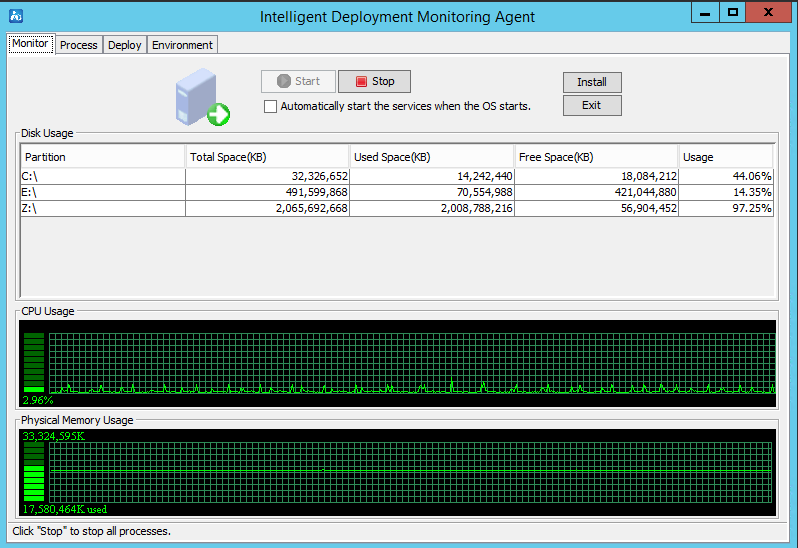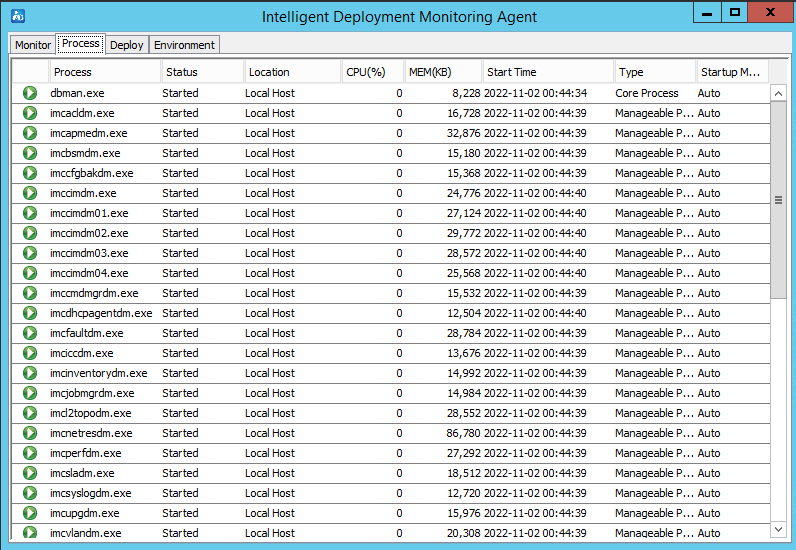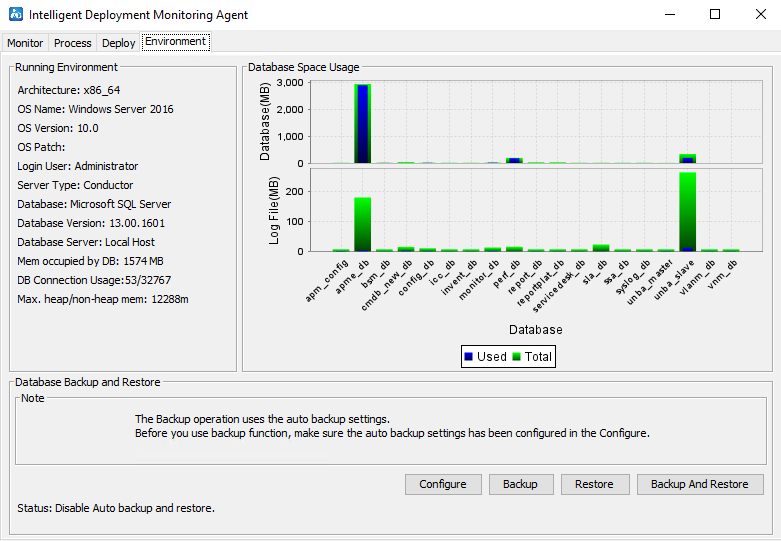- Released At: 13-02-2023
- Page Views:
- Downloads:
- Table of Contents
- Related Documents
-
Maintenance Guide
Document version: 5W100-20230210
Copyright © 2023 New H3C Technologies Co., Ltd. All rights reserved.
No part of this manual may be reproduced or transmitted in any form or by any means without prior written consent of New H3C Technologies Co., Ltd.
Except for the trademarks of New H3C Technologies Co., Ltd., any trademarks that may be mentioned in this document are the property of their respective owners.
The information in this document is subject to change without notice.
Contents
Getting started with maintenance
System roles and operator groups
Files frequently used by iMC PLAT
Files frequently used by iMC PLAT backend programs.
Files frequently used by iMC APM
Log file of the iMC APM backend programs
iMC Server & Storage Automation (SSA) fundamentals
System roles and operator groups
Files frequently used by iMC SSA
Routine iMC server maintenance
Security restrictions and guidelines
iMC deployment monitoring agent
Getting started with maintenance
iMC PLAT fundamentals
System roles and operator groups
The iMC system provides three roles. Each role has different permissions, as shown in Table 1.
|
Role |
Remarks |
|
Administrator |
Has all permissions except the permissions to deploy components and register licenses, and is able to manage all device resources and user resources. |
|
Maintainer |
Has most permissions except system management and parameter setting permissions. You can customize the device groups and user groups that can be managed by a maintainer. In this way, you can control the resource access permissions of the maintainer. |
|
Viewer |
Has permissions to view functions except system management and parameter settings. You can customize the device groups and user groups that can be viewed by a viewer. In this way, you can control the resource viewing permissions of the viewer. |
Based on the three roles, you can further divide the permissions to configure operator groups. Each iMC operator belongs to an operator group, which determines the operation permissions of the operator.
You can customize operator groups. The system predefines three default groups, including administrator group, maintainer group, and viewer group. The default groups cannot be edited. The user-defined operator groups can be created based on the preceding three default groups, and you can reduce permissions as needed, as shown in Figure 1.
Figure 1 Adding an operator group
iMC PLAT directory structure
In this document, suppose the root installation directory of the iMC server is $IMC_ROOT. Table 2 describes the directory structure after the server is installed.
Table 2 System directory structure
|
Directory name |
Description |
|
$IMC_ROOT/server |
Stores the files and subdirectories related to the iMC backend. |
|
$IMC_ROOT/server/bin |
Stores the executable files of the iMC backend programs. |
|
$IMC_ROOT/server/conf |
Stores the iMC backend configuration file. |
|
$IMC_ROOT/server/conf/log |
Stores the running log files related to the iMC backend. |
|
$IMC_ROOT/server/data |
Stores the iMC backend data that must be stored persistently, including the backup device configuration files, device software images, and task-related information. |
|
$IMC_ROOT/server/locale |
Stores the files and subdirectories related to the specific languages. In the current software version, iMC supports only languages Chinese and English. |
|
$IMC_ROOT/server/locale/C |
Stores the files and subdirectories in Chinese. |
|
$IMC_ROOT/server/locale/zh |
Stores the files and subdirectories in English. |
|
$IMC_ROOT/server/tmp |
Stores the temporary files during the system running process. |
|
$IMC_ROOT/client |
Stores the related files and folders used by the iMC frontend Web service. |
|
$IMC_ROOT/client/bin |
Stores the start/stop scripts and tools of the iMC frontend Web service. |
|
$IMC_ROOT/client/conf |
Stores the configuration file of the iMC frontend Web service. |
|
$IMC_ROOT/client/log |
Stores the related running log files of the iMC frontend Web service. |
|
$IMC_ROOT/client/repository |
Stores the common class repository used by the iMC frontend Web service. |
|
$IMC_ROOT/client/security |
Stores the security-related certificate files used by the iMC frontend Web service. |
|
$IMC_ROOT/client/web |
Stores the application programs of the iMC frontend Web service. |
Files frequently used by iMC PLAT
Table 3 describes the storage paths and functions of some frequently used files.
|
File name |
Description |
|
$IMC_ROOT/server/conf/ imf.cfg |
System configuration file of the iMC message platform, which contains the communication environment parameters of the system. After iMC is installed, do not edit this file. If you do that, the system might become abnormal. |
|
$IMC_ROOT/server/conf/ qvdm.conf |
Basic configuration file of the iMC platform, which contains the following information: · Database connection parameters of each component of the platform. · Device software storage directories. · Device configuration file storage directories. · Alarm running parameters. · Alarm listening port. · Running log level. · Running log retention days. · Current system language. Typically, do not edit this file. If you do that, the system might become abnormal. |
|
$IMC_ROOT/server/conf/ QvProcessManager.xml |
iMC process management configuration file, including the CPU/memory/disk alarm thresholds, process start method, process check method, and polling interval. |
|
$IMC_ROOT/server/conf/ imcsyslogdm.conf |
Configuration file used by the iMC syslog management component, including the database connection parameters and so on. |
|
$IMC_ROOT/server/conf/ syslog.xml |
Configuration file for the iMC syslog management component to receive log messages, including the listening port, the number of threads, buffer processing policies, and syslog template definitions. |
|
$IMC_ROOT/client/conf/http.properties |
Port configuration file of the iMC frontend Web service. |
|
$IMC_ROOT/client/conf/log4j.properties |
Running log configuration file of the iMC frontend Web service. |
Files frequently used by iMC PLAT backend programs.
The log is a file or data table recording various information, and is used to trace and locate issues. The iMC system provides two types of log: running log and operation log. The operation log is the function that the system provides to final users. The final users can search for log messages on the GUI, and the details are not described in this document. The following information describes the running log in details.
The backend running log records information during the program running process, for example, the data loading conditions during the program startup process and the errors and potential errors generated during the system running process. The running log is stored in the $IMC_ROOT\server\conf\log directory, and includes the iMC backend process running log and iMF/iMG running log.
iMC backend process running log
Format of the iMC backend process running log file name
Figure 2 descries the log file name format.
Example:
The log file name imcnetresdm_2008-08-16.log means that the running log is generated in 2008/08/16 by the resource server (imcnetresdm).
System running log format
Each running log message format is as follows:
yyyy-mm-dd hh:mm:ss [Module Name] [log level (error code)] [thread id] [class name::method] description
Each section is separated by using spaces. The log level and the error code are separated by using a space. The class name and method are separated by using two colons (::).
Table 4 describes each section.
|
Section |
Description |
|
yyyy-mm-dd |
Date in YYYY-MM-DD format when the log message was output, for example, 2006-08-22. |
|
hh:mm:ss |
Time in HH:MM:SS format when the log message was output, for example, 20:30:18. |
|
Module Name |
Name of the module that output the issue. |
|
log level |
Log severity level. For more information, see Table 5. |
|
error code |
Error code, for example, 0 or 1005. |
|
thread id |
Thread ID. |
|
class name |
Class name or namespace. |
|
method |
Method or function name. |
|
description |
Log message description. |
|
Log severity level |
Description |
|
FATAL |
Critical error. The normal operation of the system might be impacted, and the error cannot be automatically recovered typically. |
|
ERROR |
Common error. Error that occurred when a module was running. The error can be automatically recovered typically. The system can continue to run normally, but some process data or result data might be incorrect. |
|
WARNING |
Warning. Exceptions that occurred when a module was running. The exceptions might cause some errors, but do not affect the normal operation of the system. |
|
INFO |
Information. The information prompts the user of the specific events and describes the key steps of a service process. Information of this level is targeted at the testers and maintenance personnel. |
|
DEBUG |
Debugging. Traces the execution steps of a module. Information of this level is targeted at the developers. |
Example:
The log file records the running log message “2008-02-21 19:59:04 [FaultDM] [DEBUG (0)] [1000] [CGlobalEncap::startThread] Total available memory is 511M.”
The log message indicates that: A DEBUG log message was generated through the startThread method of the CGlobalEncap class by thread 1000 of the alarm backend module at 2008-02-21 19:59:04, and the log message describes that the total available memory of the system is 511 M.
iMF/iMG running log
iMF/iMG is the basic framework of the iMC backend process. Because iMF/iMG generates a large number of log messages, the log messages are separately saved, and the messages are recorded in a round robin manner. The smallest log file number is 0, and the greatest log file number is 9. The log files are output in the order of 0 -> 1 -> 2 -> 3 ->4 ->5 -> 6 -> 7 -> 8-> 9 -> 0 cyclically.
iMF log file name format
NOTE:
· The procid field represents the process ID, which is uniformly allocated by iMC. For example, the process ID is 1 for the resource backend and 16 for the Layer 2 topology backend.
· The prochandle field represents the process handle, and is used to identify different processes of the same application. For the iMC backend process, the prochandle value is 0 in most cases.
· The n field represents the file serial number in the range of 0 to 9.
iMG log file name format
img_n.log, where the n field represents the file serial number in the range of 0 to 9.
iMF/iMG output log format
yyyy-mm-dd hh:mm:ss.ms [Module Name] description.
· The yyyy-mm-dd field represents the date when the log message was output, for example, 2006-08-22.
· The hh:mm:ss.ms field represents the time when the log message was output, for example, 20:30:18. 608.
· The Module Name field represents the running module or function, for example, CImfTaskMgr::delTask.
· The description field represents the log description.
Example: 2011-01-30 15:34:18.608 CImfTaskMgr::delTask taskmgr 254 task 35 has been deleted.
The log message indicates that task 35 of task manager 254 was deleted in the CImfTaskMgr::delTask function at 2011-01-30 15:34:18.608.
iMC PLAT-related databases
Table 6 describes various system databases of iMC.
|
Database name |
Component |
Description |
|
config_db |
Resource management component. |
Stores the user resource data, device resource data, and basic platform data. |
|
monitor_db |
Alarm management component. |
Stores the alarm configuration data, raw alarm data, and alarm statistics. |
|
perf_db |
Performance management component. |
Stores the performance configuration data, collected performance data, and performance statistics & analysis data. |
|
syslog_db |
Syslog management component. |
Stores the syslog configuration data and raw syslog messages. |
|
icc_db |
iCC management component. |
Stores the device configuration file-related data and device software-related data. |
|
aclm_db |
ACL management component. |
Stores the ACL-related configuration data. |
|
invent_db |
Asset management component. |
Stores the asset management-related data. |
|
vlanm_db |
VLAN management component. |
Stores the VLAN-related configuration data. |
|
vnm_db |
Virtual network management component. |
Stores the virtual network-related configuration data. |
iMC PLAT-related processes
The iMC processes will occupy certain memory and CPU resources. To reduce the memory usage and CPU load and improve the iMC server performance, you can stop some unnecessary iMC processes. Table 7 describes the iMC processes and port numbers.
Table 7 iMC processes and port numbers
|
Process name |
Description |
Protocol/port number |
Startup requirements and dependencies |
|
img.exe |
Intelligent message gateway process, which forwards messages between processes. |
TCP/8800 |
Core process. It must be started and cannot be stopped. |
|
imcsysdm.exe |
Process manager process, which monitors the running status of the system and each process. After a monitored process is stopped, it can be automatically started, and an alarm can be generated in real time to report the system and process issues. |
N/A |
Core process. It must be started and cannot be stopped. |
|
imcsysdm_shell.exe |
Starts the imcsysdm.exe process. |
N/A |
This process runs only when the system is started or stopped, and immediately exits after the system is started or stopped. |
|
tftpserver.exe |
TFTP server, which transfers files. |
UDP/69 |
This process occupies few resources. As a best practice, do not stop it. On the server where iCC is deployed, do not stop this process. |
|
imcnetresdm.exe |
Resource service process, which manages basic device settings and public topology. |
UDP/161 TCP/23 |
Basic iMC process. It must be started and cannot be stopped. |
|
imcl2topodm.exe |
Layer 2 topology service process, which calculates and manages the Layer 2 topology. |
UDP/161 |
If you do not need to manage Layer 2 devices, you can stop this process. |
|
imcjobmgrdm.exe |
General task management service process, which uniformly schedules and manages tasks. |
N/A |
Basic iMC process. Many components use this service process to process tasks. If this service process is stopped, tasks of related components cannot be created or scheduled. |
|
imccmdmgrdm.exe |
General command execution service process, which executes commands on devices. |
TCP/23 |
Basic iMC process. If this service process is stopped, some components cannot deploy commands to devices. |
|
imcfaultdm.exe |
Alarm management service process, which receives and manages alarms. |
UDP/161 UDP/162 |
Basic iMC process. If you do not need to receive alarms, you can stop this process. |
|
imcperfdm.exe |
Performance data collection service process, which collects and manages performance data. |
UDP/161 |
Basic iMC process. If you do not need to collect performance data, you can stop this process. |
|
imcsyslogdm.exe |
Syslog log service process, which receives and manages syslog messages. |
UDP/514 UDP/515 |
Basic iMC process. If you do not need to receive syslog messages, you can stop this process. |
|
imccfgbakdm.exe |
Configuration file management service process, which backs up, restores, and deploys configuration files and manages configuration files. |
UDP/161 TCP/20 TCP/21 TCP/22 TCP/23 |
If you do not need to manage configuration files, you can stop this process. |
|
imcupgdm.exe |
Device software upgrade management backend, which maintains and deploys device software images. |
UDP/161 TCP/20 TCP/21 TCP/22 TCP/23 |
If you do not need to manage device software images, you can stop this process. |
|
imcacldm.exe |
ACL management component service process, which polls and deploys configuration of the ACL management component. |
TCP/23 |
If you do not need to manage ACLs, you can stop this process. |
|
imcinventorydm.exe |
Asset management component service process, which polls and audits network assets and polls and maintains stack information. |
UDP/161 |
If you do not need to manage assets or stack devices, you can stop this process. |
|
imcvlandm.exe |
VLAN management component backend process, which polls and configures VLAN data and calculates the VLAN topology. |
UDP/161 TCP/23 |
If you do not need to manage VLANs, you can stop this process. |
|
imcvnmdm.exe |
Virtual network management component backend process, which polls and configures virtual network data and calculates the virtual network topology. |
TCP/135 TCP/443 TCP/8100 |
If you do not need to manage virtual networks, you can stop this process. |
|
jserver |
iMC frontend Web service process, which provides Web services externally. |
TCP/8080 TCP/8443 (selected when the platform component is deployed) |
To start his process, first make sure the databases and the img.exe process have been started. If this process is stopped, Web services cannot be provided externally. At the same time, some scheduled tasks (for example, scheduled data export and scheduled report generation) cannot be completed. |
iMC APM fundamentals
iMC APM directory structure
In this document, suppose the root installation directory of the iMC server is $IMC_ROOT. Table 8 describes the directory structure after the server is installed.
Table 8 System directory structure
|
Directory name |
Description |
|
$IMC_ROOT/apmserver |
Stores the files and subdirectories related to the iMC APM frontend. |
|
$IMC_ROOT/apmserver/bin |
Stores the start/stop command scripts for the apmserver process. |
|
$IMC_ROOT/apmserver/log |
Stores the running log files related to the iMC APM backend. |
|
$IMC_ROOT/server/conf/apme |
Stores the iMC APM application configuration file. |
|
$IMC_ROOT/server/conf/apmother |
Stores the iMC APM escape file. |
|
$IMC_ROOT/server/conf/log |
Stores the running log files related to the iMC APM backend. |
Files frequently used by iMC APM
Table 9 describes the storage paths and functions of some frequently used files.
|
File name |
Description |
|
xml files in the $IMC_ROOT/server/conf/apme directory |
APM application configuration files. |
|
$IMC_ROOT/server/conf/apmother/LocalStrings_zh_CN |
APM escape file. |
|
$IMC_ROOT/server/conf/qvdm.conf |
Running log configuration file of the APM backend service. |
Log file of the iMC APM backend programs
The backend running log records information when the programs are running, for example, the data loading conditions during the program startup process and the errors and potential errors generated during the system running process. The running log file is stored in the $IMC_ROOT\server\conf\log directory.
iMC APM backend process running log
Format of the iMC backend process running log file name
Figure 3 descries the log file name format.
Example:
The log file name imcapmedm.2022-11-02.log means that the running log is generated in 2022-11-02 by the APM backend.
System running log format
Each running log message format is as follows:
yyyy-mm-dd hh:mm:ss [log level (error code)] [class name::method] description
Each section is separated by using spaces. The log level and the error code are separated by using a space. The class name and method are separated by using two colons (::).
Table 10 describes each section.
|
Section |
Description |
|
yyyy-mm-dd |
Date in YYYY-MM-DD format when the log message was output, for example, 2006-08-22. |
|
hh:mm:ss |
Time in HH:MM:SS format when the log message was output, for example, 20:30:18. |
|
log level |
Log severity level. For more information, see Table 5. |
|
error code |
Error code, for example, 0 or 1005. |
|
class name |
Class name or namespace. |
|
method |
Method or function name. |
|
description |
Log message description. |
Table 11 Log severity levels
|
Log severity level |
Description |
|
FATAL |
Critical error. The normal operation of the system might be impacted, and the error cannot be automatically recovered typically. |
|
ERROR |
Common error. Error that occurred when a module was running. The error can be automatically recovered typically. The system can continue to run normally, but some process data or result data might be incorrect. |
|
WARNING |
Warning. Exceptions that occurred when a module was running. The exceptions might cause some errors, but do not affect the normal operation of the system. |
|
INFO |
Information. The information prompts the user of the specific events and describes the key steps of a service process. Information of this level is targeted at the testers and maintenance personnel. |
|
DEBUG |
Debugging. Traces the execution steps of a module. Information of this level is targeted at the developers. |
iMC APM-related databases
Table 12 describes various system databases of iMC.
|
Database name |
Component |
Description |
|
IMC_APM_CONFIG |
iMC APM component. |
Stores the application configuration data. |
|
IMC_APME |
iMC APM component. |
Stores the collected monitor application data. |
iMC APM-related processes
Table 13 iMC processes and port numbers
|
Process name |
Description |
Protocol/port number |
Startup requirements and dependencies |
|
imcpamedm.exe |
APM backend processing process. |
N/A |
N/A |
|
apmeserver.exe |
APM frontend processing process. |
TCP/9048 (port for receiving agent data) |
N/A |
iMC Server & Storage Automation (SSA) fundamentals
System roles and operator groups
The iMC SSA system provides three roles. Each role has different permissions, as shown in Table 14.
|
Role |
Remarks |
|
Administrator |
Has all permissions except the permissions to deploy components and register licenses, and is able to manage all device resources and user resources. |
|
Maintainer |
Has most permissions except system management and parameter setting permissions. You can customize the device groups and user groups that can be managed by a maintainer. In this way, you can control the resource access permissions of the maintainer. |
|
Viewer |
Has permissions to view functions except system management and parameter settings. You can customize the device groups and user groups that can be viewed by a viewer. In this way, you can control the resource viewing permissions of the viewer. |
iMC SSA directory structure
In this document, suppose the root installation directory of iMC SSA is $IMC_ROOT. Table 15 describes the directory structure after SSA is installed.
Table 15 System directory structure
|
Directory name |
Description |
|
$IMC_ROOT/server |
Stores the files and subdirectories related to the iMC backend. |
|
$IMC_ROOT/server/bin |
Stores the executable files of the iMC backend programs. |
|
$IMC_ROOT/server/conf |
Stores the iMC backend configuration file. |
|
$IMC_ROOT/server/conf/log |
Stores the running log files related to the iMC backend. |
|
$IMC_ROOT/client |
Stores the related files and folders used by the iMC frontend Web service. |
|
$IMC_ROOT/client/bin |
Stores the start/stop scripts and tools of the iMC frontend Web service. |
|
$IMC_ROOT/client/conf |
Stores the configuration file of the iMC frontend Web service. |
|
$IMC_ROOT/client/log |
Stores the related running log files of the iMC frontend Web service. |
|
$IMC_ROOT/client/repository |
Stores the common class repository used by the iMC frontend Web service. |
|
$IMC_ROOT/client/web |
Stores the application programs of the iMC frontend Web service. |
Files frequently used by iMC SSA
Table 16 describes the storage paths and functions of some frequently used files.
Table 16 Frequently used files
|
File name |
Description |
|
$IMC_ROOT/server/conf/ cim.conf |
Configuration file of the iMC SSA backend process. |
|
$IMC_ROOT/server/conf/ log/imccimdm.txt, imccimdm01.txt, imccimdm02.txt , imccimdm03.txt, imccimdm04.txt |
iMC SSA backend log. |
|
$IMC_ROOT/client/conf/cim/serverinfo/vendor.xml |
iMC SAA enables custom SNMP collection. |
|
$IMC_ROOT/client/conf/cim/rest/conf/ vendor.xml |
iMC SAA enables custom REST collection. |
|
$IMC_ROOT/ client/log/ imcforeground.log |
iMC SSA frontend log. |
iMC SSA-related databases
Table 17 describes the iMC SSA system databases.
|
Database name |
Component |
Description |
|
ssa_db |
iMC SSA |
Stores the basic SSA data. |
iMC SSA-related processes
Table 18 describes the iMC SSA processes and port numbers.
Table 18 iMC processes and port numbers
|
Process name |
Description |
Protocol/port number |
Startup requirements and dependencies |
|
jserver |
iMC frontend Web service process, which provides Web services externally. |
TCP/8080 TCP/8443 (selected when the platform component is deployed) |
To start his process, first make sure the databases and the img.exe process have been started. If this process is stopped, Web services cannot be provided externally. At the same time, some scheduled tasks (for example, scheduled data export and scheduled report generation) cannot be completed. |
|
imccimdm |
iMC SSA backend process. |
TCP/99 |
N/A |
|
imccimdm01 |
iMC SSA backend process. |
TCP/1298 |
N/A |
|
imccimdm02 |
iMC SSA backend process. |
TCP/1299 |
N/A |
|
imccimdm03 |
iMC SSA backend process. |
TCP/1300 |
N/A |
|
imccimdm04 |
iMC SSA backend process. |
TCP/1301 |
N/A |
Routine iMC server maintenance
Operating system maintenance
Windows operating system
The Windows server operation system provides a GUI, and is easy to operate. This section describes only some frequent operations related to iMC.
Start the task manager
The task manager of Windows Server can monitor the running status of programs in the current Windows environment.
When Windows Server is running normally, press Ctrl+Alt+Delete. The Windows security screen opens. On the screen, click Task Manager. The task manager opens, as shown in Figure 4.
Figure 4 Starting the task manager
Monitor processes
On the Windows task manager, click the Processes tab to view the status of all processes in the system, as shown in Figure 5.
The preceding figure shows the name, process ID, CPU ID, CPU usage time, and memory usage size of each process. Click a column heading to sort processes by the column heading, so that you can easily monitor processes.
Database maintenance
Security restrictions and guidelines
When installing SQL server, do not use the Windows user binding mode. You must use the hybrid mode. That is, you must provide a separate password for the user sa.
iMC deployment monitoring agent
Use the deployment monitoring agent to monitor the server resources and processes.
1. Click Start > Programs > H3C Intelligent Management Center, and start the iMC deployment monitoring agent, as shown in Figure 6.
Figure 6 Deployment monitoring agent
2. On the Monitor tab, verify that the disk usage, CPU usage, and memory usage of the iMC server are normal, as shown in Figure 7.
Figure 7 Viewing performance data
3. On the Process tab, verify that the iMC-related processes are running normally, as shown in Figure 8.
Figure 8 Viewing and monitoring processes
4. On the Environment tab, verify that the iMC database is running normally, as shown in Figure 9.
Figure 9 Viewing the database state

